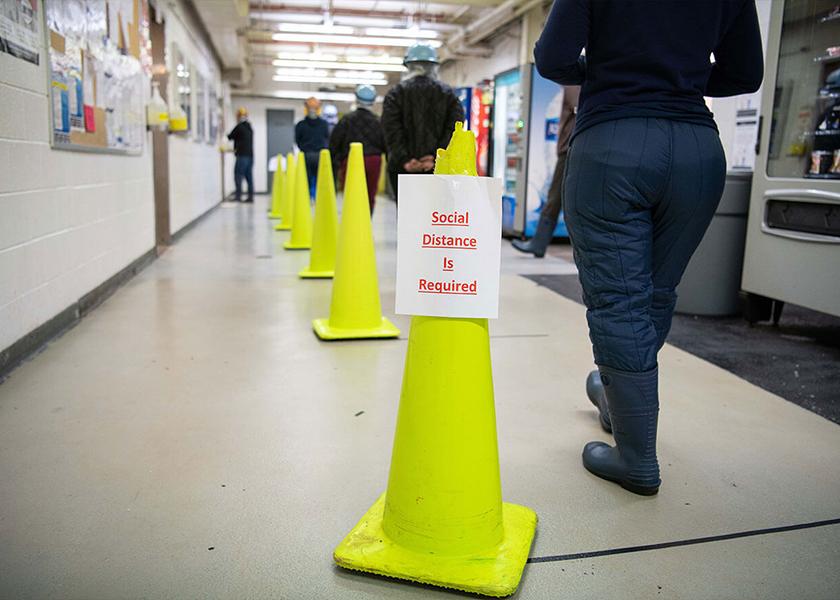COVID-19 Case Rates in Packing Plants Decline as General Population Rate Soars

Efforts to protect the men and women working to keep Americans’ refrigerators full are working, says Meat Institute president and CEO Julie Anna Potts.
New analysis of independent data for 2020 show that reported new COVID-19 infection rates amongst meat and poultry workers were five times lower in December than in May, while rates in the general population rocketed up by nine times in the same period, the Meat Institute reports.
The meat and poultry sector reported an average of 19.91 new reported cases per 100,000 workers per day in December, compared to an average of 98.39 new reported cases per 100,000 workers per day in May, according to data from the Food and Environment Reporting Network (FERN).
Meanwhile, the New York Times reports that during the same period, the average new case rate for the U.S. population rose from 7.11 cases per 100,000 people per day in May to 63.01 cases per 100,000 people per day in December.
To date, more than $1.5 billion has been spent on comprehensive protections in packing plants since the spring.
“Meat Institute members stand ready to work with the Biden administration to continue using these proven measures and moving forward to vaccinate frontline meat and poultry workers as soon as possible and even assist in vaccine distribution for all Americans,” Potts said.
Read more:
Worker Absenteeism in Packing Plants is No Surprise
CDC Prioritizes Frontline Meat Workers for COVID-19 Vaccination
Pilgrim's Proposes $75 Million Chicken Price-Fixing Settlement
Smithfield Foods Suspends Federal Campaign Donations After U.S. Capitol Riot







